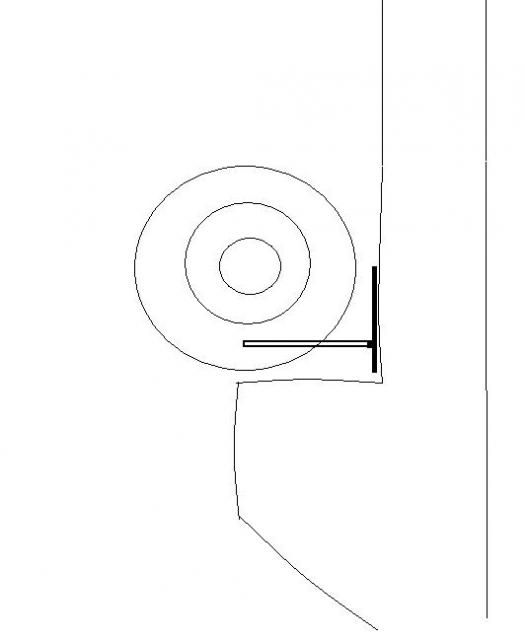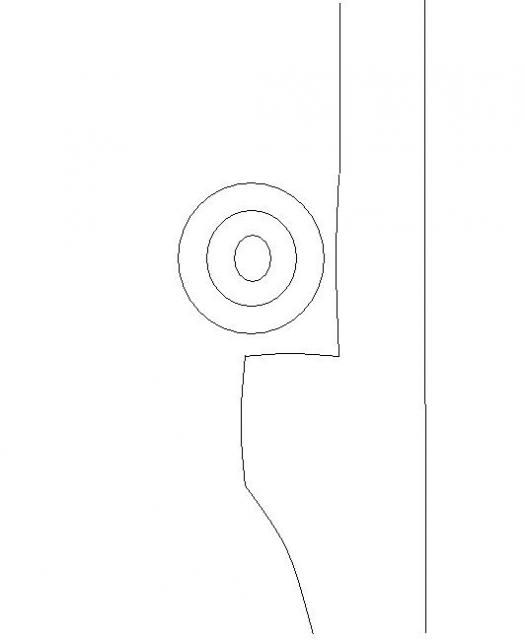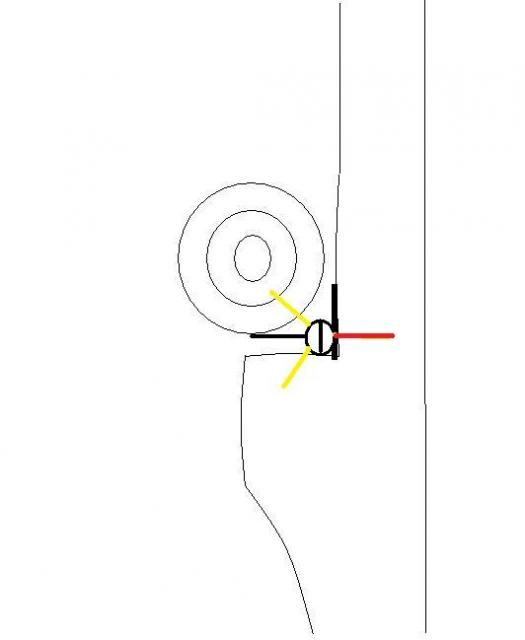|
|
Post by BT on Jun 2, 2013 3:31:43 GMT -5
I see so many people asking how to start out shooting traditional bows that I figured this would be a good topic to post here. I know it has been covered before in pieces here and there throughout this site but maybe we could get everything on one thread. If this comes out well it could be stickied for those that come here wondering about the same thing. We have some very good traditional folks here already and I hope that others who come here over time will also add what works best for them in a descriptive and instructive manner. For my posts, I wont go into anything that I don't do myself currently. What I have done in the past really doesn't matter because if it worked so well, I would still be doing it. Everything works well for some folks but nothing works for everyone. That's why I am sticking with what I do best currently.  |
|
|
|
Post by BT on Jun 2, 2013 4:21:13 GMT -5
When I went back to the recurve maye 10 years ago, I was unable to shoot instinctive anymore. I don't know why but that's just the way it went. I got to the point of where I was so upset with trying to get it back that I almost gave it up all together. What aggravated me the most about the learning process was that I could not be 100% confident in my ability to place the shot on a real animal if it came to it. For me, the inability to be 100% confident in a hunting situation was the death nail and I had to come up with a way to be 100% confident or I would never hunt with this bow. This mindset and desire to hunt with a stick bow is what developed my current shooting style which is gap shooting. When I started gap shooting I quickly saw that the precision I wanted was not there for me. I was so accustomed to sights that I started to develop target panic because I had no fine measure of accuracy before the release of the arrow. To correct this I went to a fixed point that would give me a perfect sight picture like a sight pin but without using a traditional sight. The trick for me was to put a flipper rest on my bow and then use that flipper as a sight pin. I used a flipper II rest from NAP which was a perfect cheap rest for what I wanted to do with it. To adjust horizontal impact I simply trimmed the flipper arm to bring me left until I was perfectly on the bulls eye. The vertical elevation was achieved by shooting a changing visual gap between the flipper arm and the bulls eye dependant on the distance to the target. This is how I saw my launcher arm at 20 yards.  For 30 yards the end of the launcher arm would be dead in the center of the bulls eye. For 30 yards the end of the launcher arm would be dead in the center of the bulls eye.By using this method, I was able to refine my shooting form much faster due to the fact that I no longer had to focus so much on aiming. If my form was poor it would show up and I wouldn't have to wonder if it was my point of aim that was the error or was it my form?. Anything negative that happened was always form. What I then found to be a fact for me was that if I always had a perfect anchor, I would never have a error on the shot that would be either left or right. If I had a high or low impact, many times it was a matter of my visual perception being off rather than anchor. It was hard for me to have an error of both vertical and horizontal while using the flipper and therefore I was always able to correct any poor shot quickly due to the fact that I had fewer variables that would cause such an error. I used this method for years because it was so accurate and therefore kept me confident when I was at full draw in the tree stand. Of sure I would shake sometimes but it wasn't due to the fact that I might miss. In fact, when I at times found the racing heart to be too much... this system still got the arrow on target, even when I was a wreck. ;D I still use this method but modified. I now shoot off the shelf and use the edge of the shelf as my centering point on the bulls eye as shown below.  When shooting with a field point, I will use the tip of the arrow in place of the flipper to adjust elevation. When I am hunting I use a broadhead to replicate the flipper again, as shown below.  Note that the color lines are fletchings & the black line is the blade of the broadhead. I do not shoot with the arrow directly under my eye as I find this to be uncomfortable. I shoot with an anchor that has my string hand cupping the high point of my cheekbone which is a very high anchor for most people but it puts the arrow very close to my eye. Many people assume that I am shot gunning the arrow but I am not. I am just causing a smaller gap between my aiming point and the bulls eye, which I like. Sometimes on very close shots I will face walk to get the aiming point directly on the bulls eye. Sometimes I will string walk to accomplish the same point on aim. It all depends on the moment since either is comfortable for me. I will say that in a hurry, I will face walk and if I have time to plan the shot I will most times string walk. The flipper is much more accurate out to 80 yards while the shelf method is pretty darn good up to 30 yards and then falls apart progressively as the distance increase out to 40 yards. I don't use a shelf for 3-D if the range distances can go beyond 30 yards, since I am just a lot more accurate with a flipper. For hunting I just get more satisfaction in shooting off the shelf for some reason. |
|
Greg Krause
Moderator
PRO STAFF 1
AKA- Skipmaster1
Posts: 3,990
|
Post by Greg Krause on Jun 3, 2013 9:44:07 GMT -5
Bt taught me his method for using the flipper rest and it was quick and easy to become proficient. Since then I have moved away from using recurves with that method to shooting longbows instinctively. I couldn't have made that transition so easily without using BT's method first.
One of the biggest bucks I've taken was killed at 17 yards with the flipper method on only the 3 rd day of hunting with the recurve. I was ready to hunt with just a summers worth of practice
|
|
smj
Forum Guide
  Traditional Council
Traditional Council
Posts: 1,819
|
Post by smj on Jun 3, 2013 17:41:30 GMT -5
I learned to shoot as a kid from my dad. The method of the time was to place a white, balled up, rag on the lane. Draw, put the tip of your arrow on the balled up rag, release. See where you hit and then move the white balled up rag around until you hit what you wanted to hit. Works well enough once set up... Multiple shooters, no problem. Use different color balled up rags.
Oh yeah, mark with some tape where your feet go, too!
|
|
|
|
Post by BT on Jun 4, 2013 5:36:37 GMT -5
I learned to shoot as a kid from my dad. The method of the time was to place a white, balled up, rag on the lane. Draw, put the tip of your arrow on the balled up rag, release. See where you hit and then move the white balled up rag around until you hit what you wanted to hit. Works well enough once set up... Multiple shooters, no problem. Use different color balled up rags. Oh yeah, mark with some tape where your feet go, too! I just heard of this method for the first time on one of the masters of the barebow DVD's. It was just a passing mention but enough of one that I got what was being said. I relate this to Byron Ferguson's method of clock position, which uses the tip of the arrow held at the hour hand position in relation to the bulls eye. It would look like the image below.  Here the end of the arrow is held at 4 O'Clock which is where I see it when I use this method to shoot 3-D I think this method works pretty good as a stepping stone towards instinctive as the arrow can be viewed in the secondary line of sight and therefore is always in the line of sight whether it is being consciously looked for or not. |
|
|
|
Post by BT on Jun 4, 2013 5:41:45 GMT -5
I would be interested in hearing how you transitioned to instinctive. I have talked to very very few people who were able to say just how they came to the conclusion of their training. For most it seems that it just happened. Any chance you remember the process in a way that could be described to someone who wanted to shoot instinctive?. Bt taught me his method for using the flipper rest and it was quick and easy to become proficient. Since then I have moved away from using recurves with that method to shooting longbows instinctively. I couldn't have made that transition so easily without using BT's method first. One of the biggest bucks I've taken was killed at 17 yards with the flipper method on only the 3 rd day of hunting with the recurve. I was ready to hunt with just a summers worth of practice |
|
smj
Forum Guide
  Traditional Council
Traditional Council
Posts: 1,819
|
Post by smj on Jun 4, 2013 7:28:24 GMT -5
My take on instinctive shooting - you look at the spot you wish to hit with the arrow, and then do so... Right? That said, there is some mapping in the old brain that has to happen before you can do this reliably. Before you can repeat a shot, you have to be able to repeat your form, do things the same shot after shot. Muscle memory, the brain takes the draw to the same point every time without much thought about the process involved. Then there is the pointing the arrow correctly. BT shows above that the arrow is not always pointing at the spot, yet when released, that is where the arrow goes. The brain maps this, peripheral vision allows you to position the arrow every shot once the brain has it. Then there is the arc the arrow takes during flight. Once again, the brain has to map this and understand how to compensate for the length of the shot. If the brain was not capable of mapping all of this, we'd never ever learn to play catch... Or toss a paper wad in the trash from the other side of the room. It takes a lot of cycles, and repeated practice, to get the brain up to speed. There have been a lot of ways to go about this learning process, since not everyone learns the same it makes sense that we end up with many different ways of going about it. At some point, however, you stop looking at the crutch you've learned to use, and start looking at the spot you wish to hit. That is when you transition from using a sight of some sort, to shooting instinctive. How soon you make the transition, well, how much are you willing to put in to doing so?
Any means of aiming an arrow where you use something to gage your shot is not instinctive - this is using a sight. That said, all most every archer has an element of instinctive shooting that they call on every now and then. Ever shoot someone elses arrow? You feel the arrow, and think that it is a tad heavier than yours, so when you shoot it you hold just a bit higher than the sight pin calls for... Ever done that? This is, at least in part, an instinctive modification to your shot. Ever shot farther than your sight pins allow? Once again, at least a partly instinctive modification to your shot. Granted, it could also be called a well educated guess... But I hold that the process is very similar, the main difference being that you have to manually work through it one step at a time - real instinctive shooting the brain does all of this processing real time and without a hitch, and you don't have to be so conscious about it all !
|
|
|
|
Post by BT on Jun 4, 2013 8:56:08 GMT -5
excellent explanation SMJ
|
|
Greg Krause
Moderator
PRO STAFF 1
AKA- Skipmaster1
Posts: 3,990
|
Post by Greg Krause on Jun 4, 2013 10:10:31 GMT -5
Well said SMJ!
I used BT's method to get my form consistent. with his method I began to see the "pin" peripheral vision and just focus on the target. Once I had the muscle memory down, it was easy to forget the pin altogether.
Rod Jenkins is a gap shooter but explained it to me like this. A gap shooter and an instinctive shooter have the exact same sight picture. A gap shooter sees his gap in his peripheral vision and know exactly what his gap will be at any given range. it takes conscious thought to learn this gap. Once the shooter has really learned it, they don't have to think about it. It becomes instinctive at closer ranges.
An instinctive shooter sees the same picture but just doesn't consciously try and learn gaps at specific ranges. The brain just takes over. At hunting ranges both are incredibly accurate. But most people's brains aren't good enough to guess the gap at much longer ranges. When the range increases, most gap shooters start thinking about their gap, instead of letting their sub conscious take over.
|
|